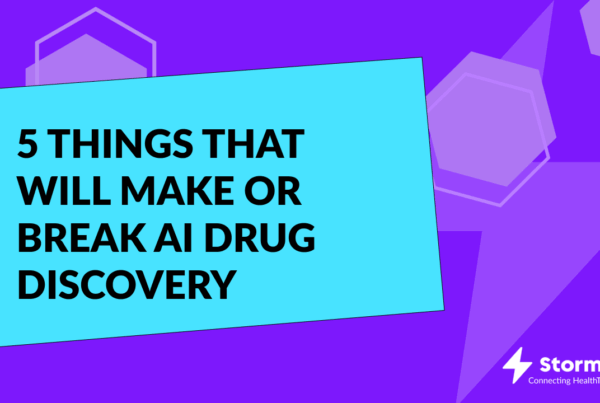The world is evolving rapidly, and technology has become an integral part of our lives. In the health sector, technology has brought about a wave of innovation and solutions through HealthTech apps. But with the increasing number of apps being launched, it can be challenging to stand out from the competition. Therefore, it’s crucial to consider a few essential factors before jumping into the creation of a HealthTech app. If you’re planning to launch a HealthTech app in 2023, this article is for you.
We’ve compiled a list of 10 critical things to consider when launching a HealthTech app in 2023:
- Identify Your Target Market:
If you’re reading this, it’s likely that you’re already aware of your target audience. But just in case you are not sure yet, when thinking about your target audience you need to take into account multiple factors such as: age group, gender, income level, and location of your target audience. You need to make sure that you are providing them with the necessary solutions, for their needs.
To provide them with the correct solution, you need to know your potential users. Understanding their needs and preferences will guide significant decisions during the app development process. It’s crucial to consider their context for using the app, such as whether they’ll be standing or sitting, if they’ll have both hands free, if they’ll have time to interact, and if they’ll be facing patients while using the app.
- Research Your Competition:
As the HealthTech industry continues to grow, it’s becoming increasingly important for businesses to research their competition in order to stay ahead. With so many HealthTech apps on the market, it can be challenging to differentiate yourself from others in your niche. Therefore, it’s essential to take the time to understand what your competition is doing, their strengths and weaknesses, and what you can offer that they can’t.
- Choose the Right Platform:
Selecting the right platform to launch your HealthTech app is a critical decision that can significantly impact its success. When making this choice, it’s important to consider the devices your target audience is using. By understanding whether they are primarily using Android or iOS devices, you can make an informed decision on which platform to choose as this can affect user acquisition and retention rates.
To determine which platform is best for your app, consider conducting market research to understand your target audience’s preferences and habits. You might also want to evaluate your competition to see which platforms they are using and how successful they are.
- Ensure Data Privacy:
When launching a HealthTech app, data privacy is a top priority that cannot be overlooked. Ensuring that your app complies with data privacy regulations such as GDPR, HIPAA, and other relevant laws is critical to the success of your app.
Failing to comply with these regulations can result in serious legal issues, fines, and damage to your reputation. It’s essential to take the time to understand the regulations that apply to your app and implement measures to meet their requirements.
By prioritizing data privacy and taking steps to comply with relevant regulations, you can build trust with your users and demonstrate a commitment to their privacy and security. This can help set your app apart from the competition and ultimately lead to greater success in the HealthTech market.
- Build a user-friendly interface:
A smooth and intuitive user experience is critical to attracting and retaining users. It’s important to prioritize accessibility for people with different abilities and ensure that the app is easy to use and navigate. By prioritizing a user-friendly interface, you can build a loyal user base and set your app apart in the competitive HealthTech market.
- Ensure Compatibility:
When launching a HealthTech app, it’s important to ensure that it is compatible with other apps and devices that your users may be using. Testing your app across multiple devices and platforms can help you identify and address compatibility issues, ensuring a seamless user experience.
In addition to compatibility with other apps and devices, integrating your app with existing healthcare systems and third-party services can enhance its functionality and convenience. This may include partnering with healthcare providers to offer additional services or integrating with electronic medical records to provide a more comprehensive user experience.
By prioritizing compatibility and integration with existing systems and services, you can build a more robust and effective HealthTech app that meets the needs of your users. This can help you stand out in the competitive HealthTech market and build a loyal user base.
- Develop a Monetization Strategy:
In order to sustain the growth and success of your HealthTech app, it’s essential to develop a solid monetization strategy. This can involve exploring different models such as in-app purchases, subscriptions, or advertisements to generate revenue.
It’s important to consider your app’s target audience and their preferences when choosing a monetization model. Subscription-based models can provide a consistent revenue stream, while advertising can generate revenue based on user engagement. Partnering with healthcare providers can also be a viable monetization option.
By developing a well-planned monetization strategy, you can ensure the long-term success and viability of your app. This can help you generate revenue and continue to provide valuable services to your users.
- Leverage AI and ML:
Artificial Intelligence (AI) and Machine Learning (ML) technologies have the potential to greatly benefit HealthTech apps. By leveraging these technologies, you can personalize the user experience, improve diagnosis accuracy, and even identify patterns that may lead to the early detection of health issues.
- Focus on Security:
Ensuring that your app is secure should be one of your top priorities. With sensitive user data being collected, it is essential to have the necessary security features in place to protect against cyber-attacks.
Two-factor authentication is one such security feature that can greatly enhance the security of your app. By requiring users to provide an additional form of identification, such as a password and a unique code sent to their phone, you can greatly reduce the risk of unauthorized access to user data.
Other security features, such as data encryption and regular security audits, should also be implemented to ensure that your app is as secure as possible. By prioritizing security in your HealthTech app development, you can build trust with your users and avoid costly legal issues.
- Develop a Marketing Plan:
When it comes to launching a HealthTech app, having a strong marketing strategy is just as important as having a great product. You could have the most innovative and effective app in the world, but if no one knows about it, it won’t make an impact. That’s why it’s crucial to build a robust marketing plan that targets your audience and communicates the benefits of your app.
Social media marketing is a powerful tool that can help you reach a wide audience and engage with potential users. By creating a social media presence for your app, you can build a community around it and share updates, insights, and user stories.
How Storm3 Can Help You
Storm3 is here to help you create the change that is needed in the HealthTech industry. We are specialist recruiters dedicated to working with the top companies in all HealthTech sectors. Whether you are a start-up or planning to scale up, Storm3 is here to help you find the right senior talent for the right specialism. If you are looking to expand your team, contact us. Follow us to stay updated on the latest HealthTech news!







